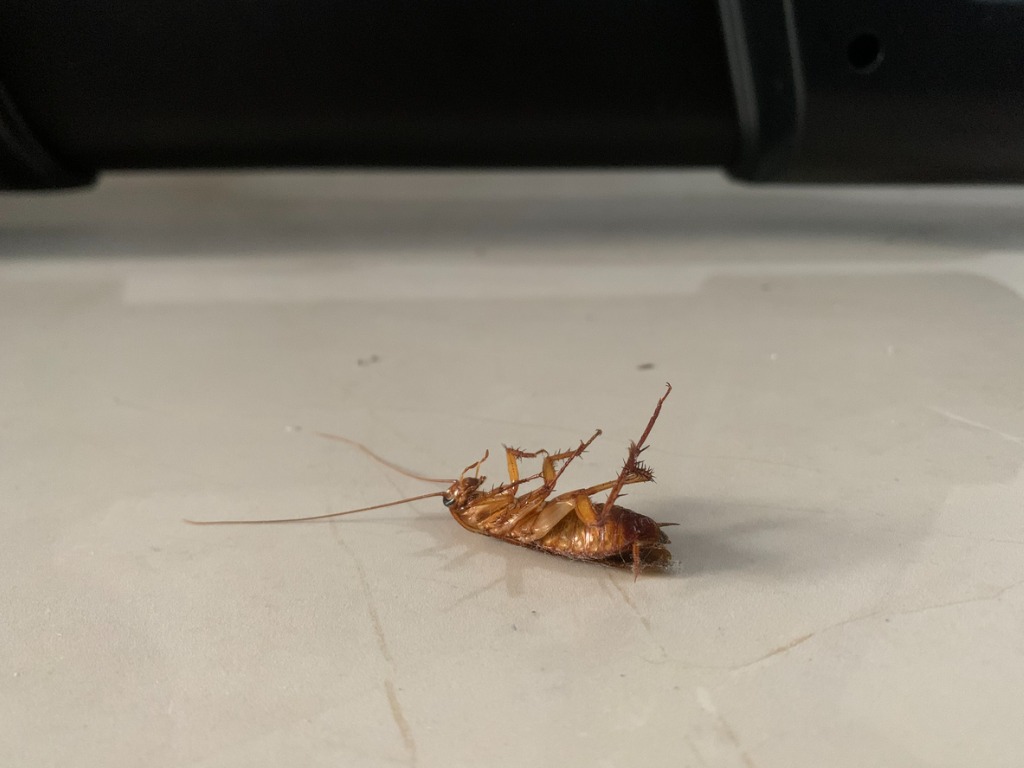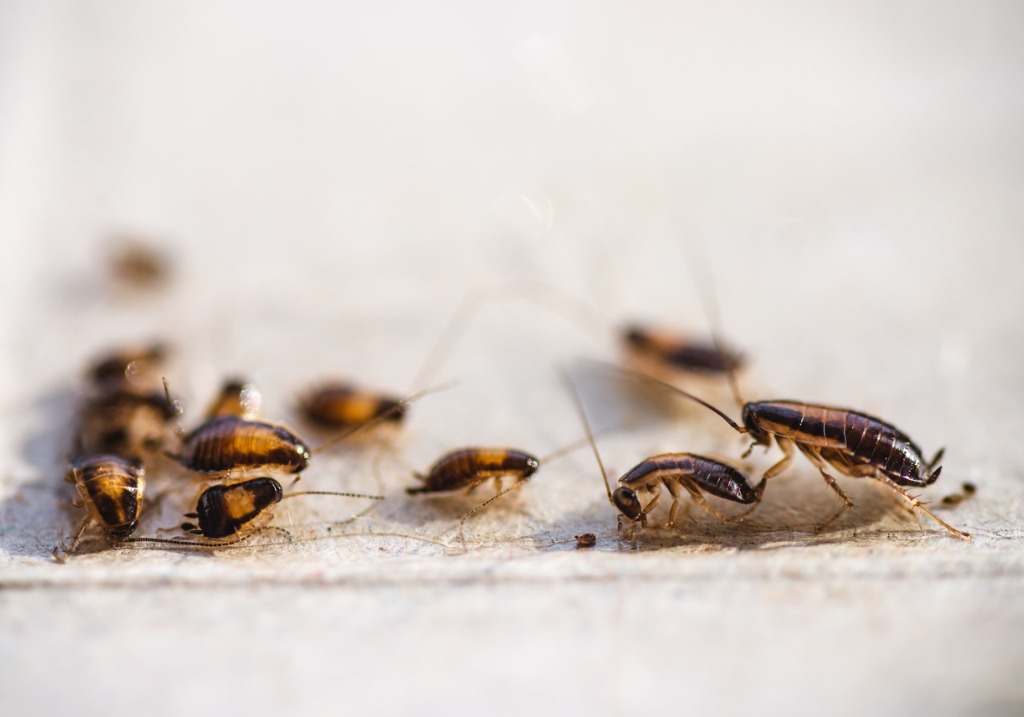Ready to banish roaches from your living space in the most eco-friendly way possible? Look no further! In this comprehensive guide, we’ll reveal a treasure trove of DIY cockroach repellents that will make you wonder why you ever relied on chemical-laden products. From common household ingredients like essential oils and baking soda to secret remedies passed down through generations, get ready to discover the best-kept secrets for keeping roaches at bay naturally. Prepare yourself for a bug-free sanctuary that even Mother Nature would be proud of!
Key takeaways
- Natural ingredients like peppermint oil, bay leaves, cucumber slices, and diatomaceous earth can effectively repel cockroaches.
- Essential oils like peppermint and lavender can be used to create DIY cockroach-repellent sprays for your home.
- Signs of a cockroach infestation include live sightings, discarded exoskeletons, dark feces, and musty odors.
- Common hiding spots for cockroaches include kitchen cabinets, behind appliances, and in cluttered areas. Sealing cracks and regular cleaning are essential for prevention.
- Natural ingredients such as baking soda, vinegar, and diatomaceous earth can be used for DIY pest control solutions.
- Safety precautions include proper handling of essential oils, protecting children and pets, and using diatomaceous earth cautiously.
What are some natural ingredients that can repel cockroaches?
Natural ingredients that can effectively repel cockroaches include peppermint oil, bay leaves, cucumber slices, and diatomaceous earth. Peppermint oil’s strong scent acts as a powerful deterrent, while bay leaves can be placed in cabinets and drawers to discourage roaches. Cucumber slices emit a repelling odor, making them useful in deterring these pests. Diatomaceous earth, a natural powder, damages cockroaches’ exoskeletons and dehydrates them, making it an effective barrier against infestations when applied in areas of cockroach activity.
How can I use essential oils to repel cockroaches?

To use essential oils like peppermint or lavender to repel cockroaches, you can create a DIY cockroach-repellent spray. Simply mix a few drops of the chosen essential oil with water in a spray bottle, shaking well to ensure thorough mixing. Then, spray this solution in areas where cockroach activity is prevalent, such as entry points, cracks, and corners. The strong and unpleasant scent of the essential oil acts as a natural deterrent, discouraging cockroaches from inhabiting those areas. Reapply the spray periodically, especially after cleaning, to maintain its effectiveness in repelling cockroaches.
Identifying Infestations
Signs of cockroach presence
Identifying a cockroach infestation can be crucial for maintaining a clean and healthy living environment. There are several signs that can help you determine the presence of cockroaches in your home. One of the most common indicators is the sighting of live cockroaches, especially during the nighttime when they are most active. Additionally, you may come across their discarded exoskeletons, as cockroaches shed their skin as they grow. Another telltale sign is the presence of tiny, dark feces that resemble coffee grounds or pepper. Unpleasant, musty odors may also emanate from areas infested with cockroaches.
Common hiding spots
Cockroaches are notorious for their ability to hide in various nooks and crannies, making them difficult to spot. To effectively combat an infestation, it’s essential to know their common hiding spots. Cockroaches often seek refuge in dark, damp, and warm places. Common hiding spots include kitchen cabinets, especially in cracks and crevices, behind appliances like refrigerators and stoves, and underneath sinks. They can also be found in cluttered basements, behind wallpaper, inside electrical outlets, and in cardboard boxes. These pests are adaptable and can squeeze through tiny openings, so it’s crucial to seal any cracks or gaps in walls, floors, and ceilings to prevent their entry and create an inhospitable environment for them. Regular cleaning, sanitation, and professional pest control measures can help keep cockroach infestations at bay.
Natural Ingredients
Essential oils (peppermint, lavender)
Essential oils like peppermint and lavender are versatile natural ingredients that serve various purposes, including pest control. Peppermint oil has a strong, pleasant scent that can deter a wide range of pests, including ants, spiders, and rodents. Mixing a few drops of peppermint oil with water and spraying it in problem areas can help keep these pests at bay. Lavender oil not only adds a pleasant fragrance but also has insect-repelling properties. Placing sachets filled with dried lavender flowers or using lavender oil in diffusers can help repel insects like moths and flies while creating a soothing ambiance in your home.
Kitchen staples (baking soda, vinegar)
Common kitchen staples like baking soda and vinegar can be remarkably effective for natural cleaning and pest control. Baking soda, with its abrasive texture, can be used to scrub surfaces and eliminate food residue that attracts pests like ants. It can also be sprinkled in areas where cockroaches and silverfish frequent, as they will ingest it, causing harm to their digestive systems. Vinegar, particularly white vinegar, is a powerful cleaning agent that can also deter ants. A mixture of water and vinegar can be used as a surface cleaner to remove food odors and discourage ants from exploring your kitchen. Additionally, vinegar traps, such as placing a bowl with vinegar and a drop of dish soap, can help catch fruit flies.
Diatomaceous earth
Diatomaceous earth is a natural and non-toxic substance derived from fossilized algae. It has remarkable pest-control properties, particularly for crawling insects. When diatomaceous earth comes into contact with insects, it damages their exoskeletons, ultimately leading to their dehydration and demise. It is highly effective against pests like ants, cockroaches, and fleas. To use diatomaceous earth, simply sprinkle it in areas where you suspect pest activity, such as cracks, crevices, and along baseboards. Keep in mind that it should be applied in dry conditions for optimal effectiveness.
DIY Repellent Recipes

Peppermint oil spray
To create a peppermint oil spray for pest control, combine 10-15 drops of peppermint essential oil with a cup of water in a spray bottle. Shake well to mix the oil and water thoroughly. Then, spray this solution in areas where you want to repel pests, such as entry points, windowsills, and corners. The strong scent of peppermint acts as a natural deterrent against ants, spiders, and rodents.
Baking soda and sugar bait
For an effective bait to control ants, mix equal parts of baking soda and granulated sugar in a small container. Place this mixture in areas where you’ve observed ant activity. The sugar attracts the ants, while the baking soda disrupts their digestive system when consumed. Be sure to keep this bait out of reach of pets and children.
Vinegar and water solution
A simple vinegar and water solution can help deter ants from entering your home. Mix equal parts of white vinegar and water in a spray bottle. Spray this solution along entry points and any trails or areas where you’ve seen ants. The strong odor of vinegar disrupts their pheromone trails, making it challenging for them to navigate and find food sources.
Diatomaceous earth barrier
To create a barrier with diatomaceous earth, sprinkle a fine layer of it in areas where you want to deter crawling insects like ants and cockroaches. Focus on cracks, crevices, and along baseboards. The diatomaceous earth damages the exoskeletons of pests, leading to their dehydration and eventual demise. Make sure to wear a mask when applying diatomaceous earth, as it can be harmful when inhaled in large quantities.
Prevention
Hygiene and cleanliness
Maintaining a high standard of hygiene and cleanliness is fundamental in preventing pest infestations. Regularly clean your home, paying special attention to the kitchen and dining areas where food particles can accumulate. Dispose of garbage promptly, wash dishes promptly, and sweep or vacuum to eliminate crumbs and food residue that can attract pests like ants, cockroaches, and rodents.
Sealing cracks
Pests often enter homes through small cracks and openings in walls, floors, and foundations. To prevent their entry, regularly inspect your home for these gaps and seal them using caulk or weatherstripping. Pay close attention to areas around doors, windows, pipes, and utility entry points. By sealing these openings, you create a barrier that can help keep pests out.
Food Storage
Proper food storage is crucial in deterring pests from invading your pantry and kitchen. Store food items in airtight containers made of glass, plastic, or metal. This prevents pests like ants, weevils, and pantry moths from accessing your food supply. Also, don’t forget to clean spills and crumbs promptly and avoid leaving food out in the open, especially overnight.
Regular inspections
Regular inspections of your home can help you identify potential pest problems before they escalate. Check for signs of pests such as droppings, gnaw marks, or nests in and around your property. Pay attention to dark and hidden areas like basements, attics, and crawlspaces. Early detection can make pest control much more manageable and cost-effective.
Safety
Handling essential oils
When handling essential oils for pest control or any other purpose, it’s essential to do so with care. Essential oils are highly concentrated and can be harmful if not used properly. Here are some safety tips:
- Always store essential oils in a cool, dark place away from direct sunlight and out of reach of children and pets.
- Use a carrier oil (e.g., coconut oil or olive oil) when applying essential oils to your skin to prevent irritation.
- When making DIY sprays, mix essential oils with water or a carrier liquid in the recommended dilution ratios to avoid skin or eye irritation.
- Keep essential oils away from your eyes and mucous membranes.
- If you or a family member experiences an adverse reaction to an essential oil, discontinue use and seek medical advice if necessary.
Protecting children and pets
When using any pest control methods, including natural remedies, it’s vital to take precautions to protect children and pets from potential harm. Here are some safety measures to consider:
- Keep pest control products out of reach of children and pets or store them in childproof containers.
- Educate family members about the proper use and storage of pest control substances.
- Avoid using toxic chemicals or pesticides in areas accessible to children and pets.
- When applying DIY repellents or using commercial pest control products, ensure that children and pets are kept away from treated areas until they are safe for reentry.
- Consider using child-resistant traps or baits for pests like rodents.
Using diatomaceous earth safely
Diatomaceous earth is generally considered safe when used correctly, but it can be an irritant if inhaled. Here’s how to use it safely:
- Wear a dust mask or respirator when applying diatomaceous earth to avoid inhaling fine particles.
- Apply diatomaceous earth in a thin layer in areas where pests are active or may travel, such as cracks, crevices, and along baseboards.
- Keep pets and children away from the treated areas until the dust settles.
- Use food-grade diatomaceous earth if applying it in areas where food is stored or prepared.
- Avoid excessive use of diatomaceous earth, as it can become less effective when it clumps together with moisture.
Monitoring
Assessing repellent effectiveness
Regularly assessing the effectiveness of your pest-repellent strategies is essential to ensure that your efforts are yielding the desired results. To do this, pay close attention to the presence or absence of pests in your home or property. Look for signs of infestation, such as live insects, droppings, or damage caused by pests. Additionally, consider using monitoring tools like sticky traps or pheromone traps, which can help you gauge the level of pest activity. If you notice that your chosen repellent methods are not deterring pests effectively, it may be time to reevaluate and adjust your approach.
Adjusting strategies as needed
Flexibility is key when it comes to pest management. If you find that your initial pest control methods are not working as expected, be prepared to adjust your strategies. This may involve trying different natural repellents, changing the application methods, or seeking professional pest control assistance if the problem persists. Keep in mind that pests can adapt over time, so periodically modifying your pest prevention and control tactics can help you stay ahead of potential infestations. Regularly monitoring and making necessary adjustments will help you maintain a pest-free environment in your home.
Conclusion
DIY cockroach repellents can be an effective and natural way to keep these unwanted pests away from your home. By using ingredients like peppermint oil, boric acid, and vinegar, you can create simple yet powerful solutions that are safe for your family and pets. These repellents not only help in deterring roaches but also offer a more eco-friendly alternative to chemical-based sprays and baits. Remember to regularly clean your house, seal any cracks or crevices, and eliminate sources of food and water to make these repellents even more effective. Take control of your home and say goodbye to roaches by trying out these natural solutions today!
FAQs
Does diatomaceous earth work against cockroaches?
Yes, diatomaceous earth is effective against cockroaches. When applied in areas where roaches frequent, it can damage their exoskeletons, leading to dehydration and eventual death. However, it should be used cautiously to avoid inhalation.
Can I use vinegar to repel cockroaches?
Vinegar can help deter cockroaches due to its strong odor. Mixing equal parts of water and vinegar in a spray bottle and applying it to potential entry points and problem areas can discourage roaches from lingering.
What should I do to prevent a cockroach infestation in my home?
Preventing a cockroach infestation involves maintaining a clean and dry living space, sealing cracks and crevices, storing food properly, and conducting regular inspections. These measures can help create an environment that is less attractive to roaches.
Are natural cockroach repellents safe for pets and children?
Many natural repellents are safe for pets and children when used as directed. However, it’s essential to keep repellents out of reach and ensure that children and pets do not ingest them. Always exercise caution and read product labels for specific safety instructions.
What should I do if my DIY repellents are not working against cockroaches?
If your DIY repellents are not effective in controlling a cockroach problem, it’s advisable to reassess your strategies. You may need to consider a combination of methods, consult with pest control professionals, or address underlying issues like excessive moisture or food sources that are attracting roaches. Persistent infestations may require professional intervention.

